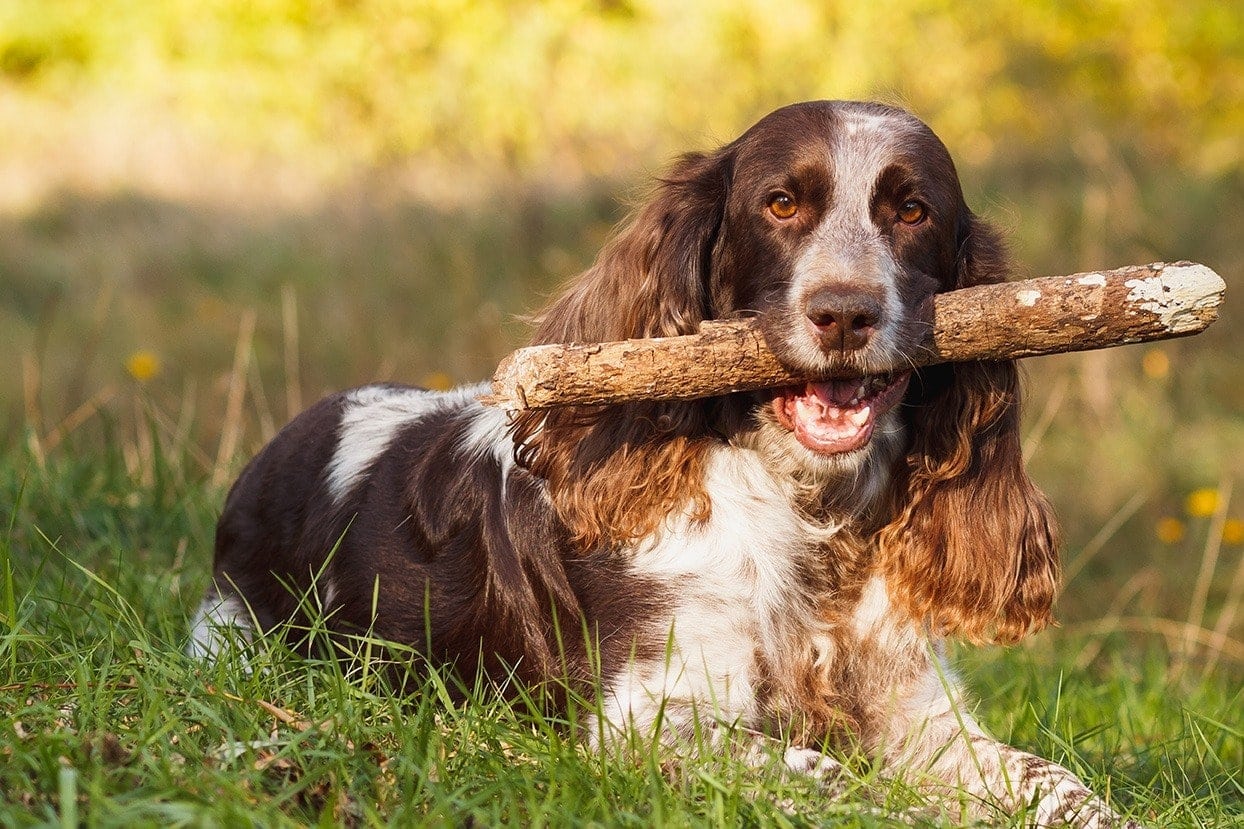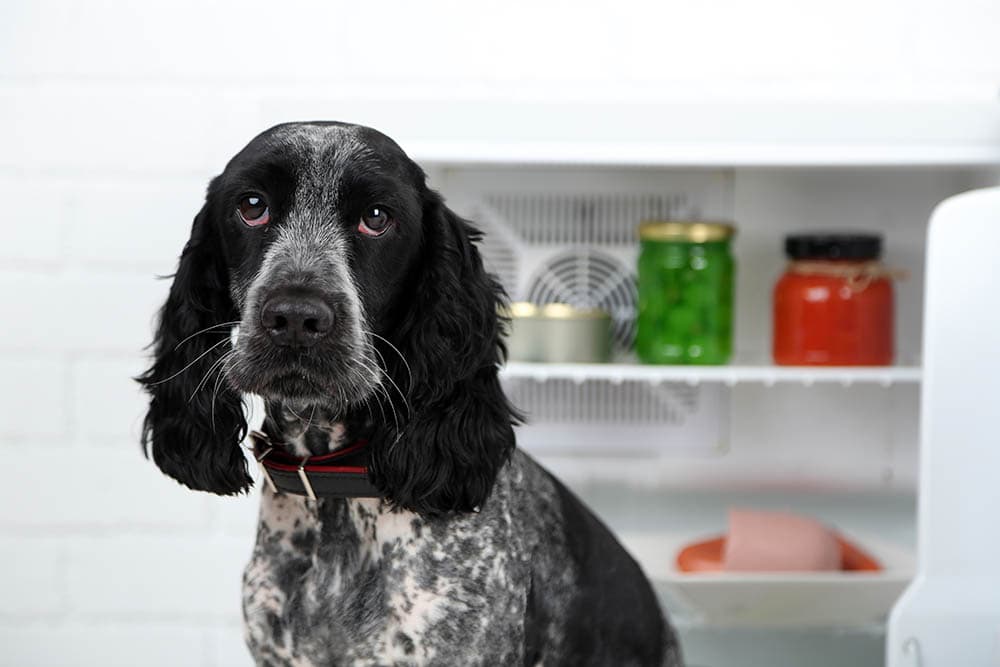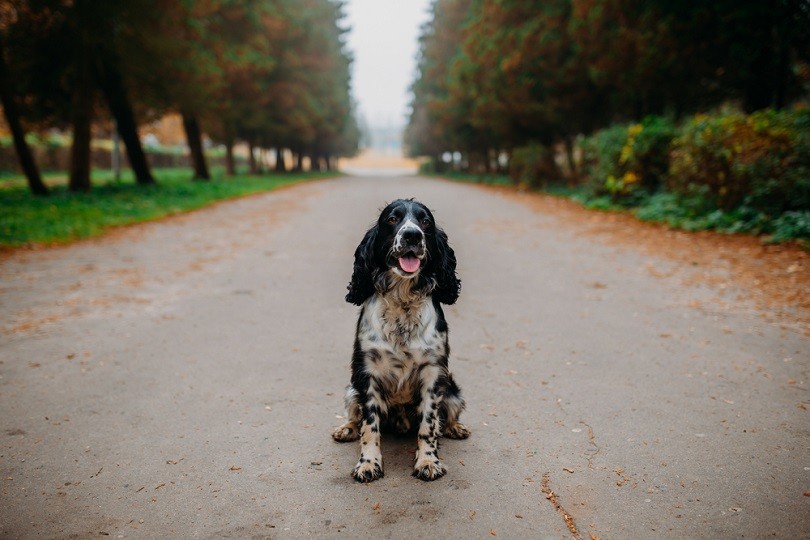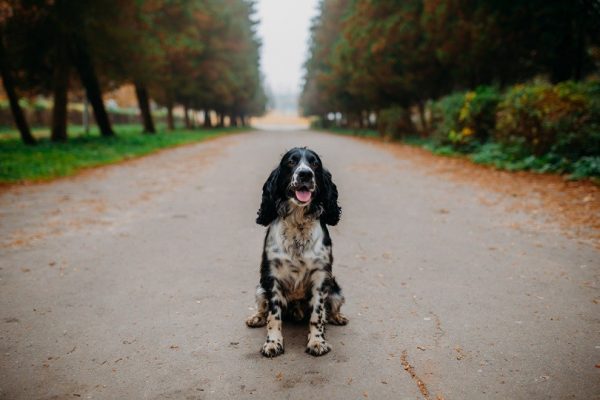Click Below to Skip Ahead
You may not have heard of the Russian Spaniel, but that’s likely to change as this breed grows more popular. This pup is the country’s smallest gun dog, with significant contributions from English Cocker Spaniels to develop a smaller but capable hunting companion. The breed has many desirable traits that make them an excellent choice in the field.
The Russian Spaniel is a crossbreed. Therefore, the American Kennel Club (AKC) doesn’t recognize them officially. However, the Continental Kennel Club (CKC) has bestowed this honor on the breed.
Breed Overview
Height:
15–18 inches
Weight:
28–40 pounds
Lifespan:
12–15 years
Colors:
White, fawn, brown, black
Suitable for:
Active families looking for a loyal pet and possible gun dog
Temperament:
Loyal, friendly, hard-working
The Russian Spaniel is gaining a foothold in the United States, and they are popular pets in their native land of Russia. This breed has a lot going for it, whether as a family pet or hunting companion. You’d be hard-pressed to find a more charming pooch. So, let’s look a bit more into the details of this unique pooch.
Russian Spaniel Characteristics
Russian Spaniel Puppies
The Russian Spaniel is still a rare breed in the United States, so you may find it challenging to find a purebred dog. We recommend beginning your search with the CKC and the Russian Spaniel Club to locate a reputable breeder.
Pet ownership is a serious responsibility that you shouldn’t take lightly. A puppy requires time and effort to raise and train properly, particularly if you want a gun dog. Many individuals send their pups to professional trainers to learn their job in this role. It’s another expense you must account for when figuring out how much having a dog will cost.
Russian Spaniel Origin & History
The Russian Spaniel’s story begins in the late 1800s with crossbreeding, including the English Cocker Spaniel and English Springer Spaniel. Early enthusiasts used other breeds to refine the desired traits. It took over 60 years to develop what would become the Russian Spaniel. Size was a crucial consideration, but they created the first official standard in 1951. It wasn’t long before the dog crossed the pond.
The creation of the Russian Spaniel Club in 2002 united American enthusiasts of the breed. The organization promoted the dog and their desirable qualities, adding to their pool of fans. Hopefully, the breed will soon earn official recognition by national organizations with continued refinement.

Temperament & Intelligence of the Russian Spaniel 🧠
The Russian Spaniel has many qualities you’d expect to find in a hunting companion. The pup is loyal and eager to please, plus they are intelligent animals that can handle the tasks expected of a gun dog. They are friendly and get along well with other canines on the hunt. These dogs are alert to spot game reliably and have an independent streak, which isn’t uncommon with others with similar jobs.
The breed gets its easy-going nature from its breeding stock. Those dogs are well-known for their gentle temperament, and their loyalty makes them good watchdogs, although they aren’t noisy animals, so they reserve barking to threats.
Are These Dogs Good for Families? 🏡
The Russian Spaniel makes an excellent family dog. They will lavish their attention and love on members of the household, and they are also kid-friendly. Their exuberant energy makes them great companions for children, with a canine companion that can keep up with the fun and games. Nevertheless, we recommend supervising playtime with the little ones.

Does This Breed Get Along With Other Pets? 🐶 😽
The Russian Spaniel can get along with other dogs, particularly if introduced while young. They often worked the field with other canines, making it instinctive for them. Other pets are another question since this breed has a strong prey drive. A fleeing cat isn’t likely to get the same warm reception, and the same caution applies to pocket pets and other small animals.
Things to Know When Owning a Russian Spaniel
Every breed has its quirks that you should know upfront before deciding which one to choose. We’ve mentioned a few things about the Russian Spaniel, including their prey drive. This dog also has a high wanderlust potential. After all, it’s essential to follow game wherever they may lead. Therefore, we recommend keeping this dog in a fenced yard or on a leash.
The Russian Spaniel doesn’t like to be left alone and is prone to separation anxiety. That’s not unusual when you consider how loyal the dog is. So, this dog isn’t the best choice for a novice pet owner or an individual who can’t give this pooch the attention they need.
Food & Diet Requirements 🦴
A high-quality commercial diet will give your dog an excellent start in life and support their growth and development. We recommend feeding puppies three to four times daily to support their active nature. After all, it takes energy to be a cute and energetic pooch. Ensure your pet has plenty of fresh water always available as well.
We don’t recommend free feeding since this breed is subject to weight gain despite their energy level. Instead, follow a defined schedule with regular meals. It’s an excellent way to monitor your pup’s body condition and adjust it as necessary. Your dog should have a well-defined waist when viewed from above.

Exercise 🐕
Exercise is necessary for the Russian Spaniel. It will keep your pet’s weight in check and provide vital mental stimulation. Walks will provide opportunities to engage with other dogs and people. Canines living this lifestyle are less likely to be fearful. We suggest at least an hour of activity daily, whether it’s time at the dog park or walks in the neighborhood.
Training 🦮
The Russian Spaniel is easy to train and eager to please, traits enthusiasts selectively bred in this pup. We suggest frequent lessons with positive reinforcement. This dog is sensitive to harsh words or punishment. Remember that this breed is a loyal friend that doesn’t want to displease you. We suggest limiting treats to training aids to avoid weight gain and motivate your pup with a potent reminder.
Grooming ✂️
You should brush your Russian Spaniel a few times weekly. It’s an excellent time to check for fleas and ticks if your pup runs in the woods. You should also check your pet’s ears frequently, given their propensity for ear infections. We suggest checking your pet’s nails in case they need trimming, particularly if your dog doesn’t walk on pavement frequently.
Health and Conditions ❤️
The Russian Spaniel is a relatively healthy breed because of the substantial gene pool from the breeding stock. The only issues of concern are those seen in these dogs. We’ve mentioned other things to monitor, including the prevalence of food allergies. Regular vet exams will keep these conditions in check and make them less likely to cause serious problems.
- Ear infections
- Food allergies
- Patellar luxation
- Hip dysplasia
- Obesity
Male vs. Female
Male and female Russian Spaniels are relatively close in size. Both sexes are equally friendly and affectionate, but it all depends on how you raise and socialize the dog. While genetics plays a role, a dog’s personality is largely shaped by their upbringing and environment.

3 Little-Known Facts About the Russian Spaniel
1. Russian Enthusiasts Safeguarded the Breed During Conflict in Their Country
Many European breeds suffered during the two World Wars and other conflicts. The Russian Spaniel is no exception. Thankfully, enthusiasts protected the pups to keep them from becoming extinct
2. Several Features Distinguish the Russian Spaniel From the English Cocker Spaniel
The Russian Spaniel has a longer body and legs than the English Cocker Spaniel, creating a noticeable physical difference between the two.
3. The Russian Spaniel Cub Has Revised the Breed Standard Twice Since Its Inception
Part of the development of the breed involved fine-tuning the standard. That occurred twice, in 1966 and 2000.

Final Thoughts
The Russian Spaniel is a lovable dog with an enduring personality. This dog is intelligent and easy to train if you’re looking for a hunting companion, and they will fulfill this role nicely. The only downside is the scarcity of this pooch. While people have taken up the dog’s cause, they are still relatively rare. If you find one, you’ll have a precious pup to bring into your home.
Featured Image Credit: AndyBir, Shutterstock










